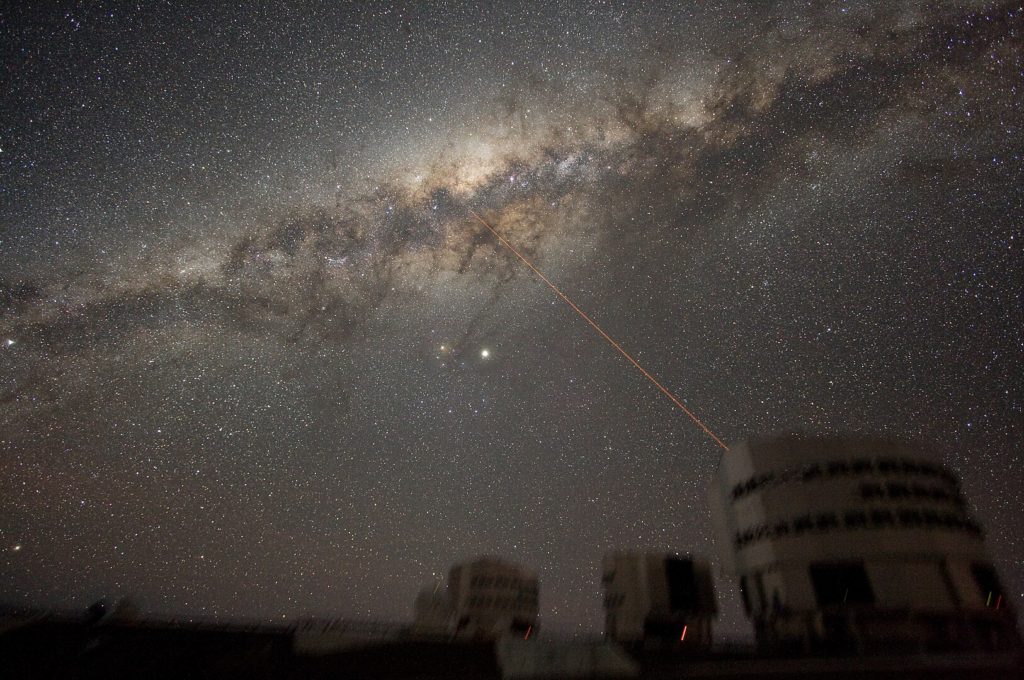Andromeda is the Milky Way’s closest galaxy. However, with over 2.5 million light years, our neighbor is still incredibly far away. But can we visit our neighbor galaxy anyway? This article shows a way to reach Andromeda within a lifetime of a human.
Nothing can be faster than the speed of light. This is one of several fundamental consequences of Einstein’s infamous relativity theory. Hence, it seems infeasible to visit our neighbor galaxy, Andromeda as even light takes 2.5 million years for such a distance. In other words, if you had an extremely strong flashlight and pointed it in the right direction, potential life forms in the Andromeda galaxy would only be able to notice it after 2.5 million years.
The same is true vice versa. So, next time you look into the night sky and discover Andromeda (that can be seen by the naked eye), remember that what you see took millions of years to get to you. Hence, every look into the sky is a glimpse into the past.
This inconceivable long time of 2.5 million years not only exceeds the lifetime of a human but also the entire human existence on Earth. Luckily, Einstein’s discoveries come along with other properties that enable us to visit Andromeda within only 10 years.
Traveling to our neighbor galaxy, Andromeda, within 10 years

No physical matter can reach the speed of light. However, it is still physically possible to build a spaceship that approaches for example 99.99% of the speed of light. But how does this help if the light still requires 2.5 million years? Don’t we need to be faster than light?
Counterintuitively, time is different from the perspective of the spaceship. In fact, time is significantly slower for fast-moving objects. To understand this, we need to take a look at two principles associated with relativity theory.
Einstein enables us to visit our neighbor galaxy
You might have heard of relativity theory before. What most people don’t know, however, is that there are actually two theories, the general and the special relativity theory. While they are related to some extent, there are important differences.
While general relativity theory is roughly about gravitational effects, the special form focuses on moving objects at constant velocities and is therefore of interest here. It was formulated in 1905 (even before the general relativity theory) and introduced the famous equation E = mc². More importantly, it was the first theory that suggested that time and space are no separate dimensions but are interwoven. This has two major consequences:
Length contraction
The faster an object is, the shorter the distance in the direction of travel gets. Hence, from the perspective of the spaceship, the distance lying ahead shortens. Of course, this does not hold from the perspective of an external observer. – For the people on Earth, the distance still seems the same.
Time dilation
Also time is different depending on the perspective. For an observer outside the spaceship, time runs faster. Conversely, if you could observe a watch on the ship from our planet and compare it to your own watch, you would find that the one that is moving tremendously fast also goes substantially slower. Again, this is different for the crew on board. From their perspective, time runs normally. However, if they could look back to Earth, they would see time is running incredibly fast.
In summary, time and space are relative. Specifically, they are relative to different observers. Distances become shorter when covered fast. Time gets slower at higher velocities.
The tragedy of the spaceship’s perspective
Consequently, when traveling at a speed almost as fast as light, the distance between the Milky Way and Andromeda appears much shorter. This enables the spaceship to visit our neighbor galaxy within only 10 years. Therefore, spaceships carrying multiple generations wouldn’t be necessary.
However, due to time dilation, you would never be able to tell anyone you knew on Earth about what you’ve seen during the last 20 years. This is because, from the perspective of the people you left, it didn’t take you 2x 10 years to get there and back, but 2x 2.5 million years that have passed in the meantime on your home planet.
Did you know that when Andromeda and the Milky Way are expected to merge to “Milkdromeda” in the distant future (4-5 billion years), there are likely no stars that will actually collide? The reason for this is that despite the billions of stars, the space between them is so sparse that the probability of collusion is exceedingly small. Find out more about the universe in other articles.








